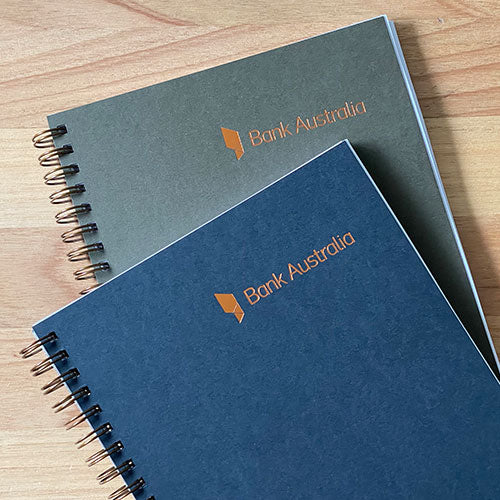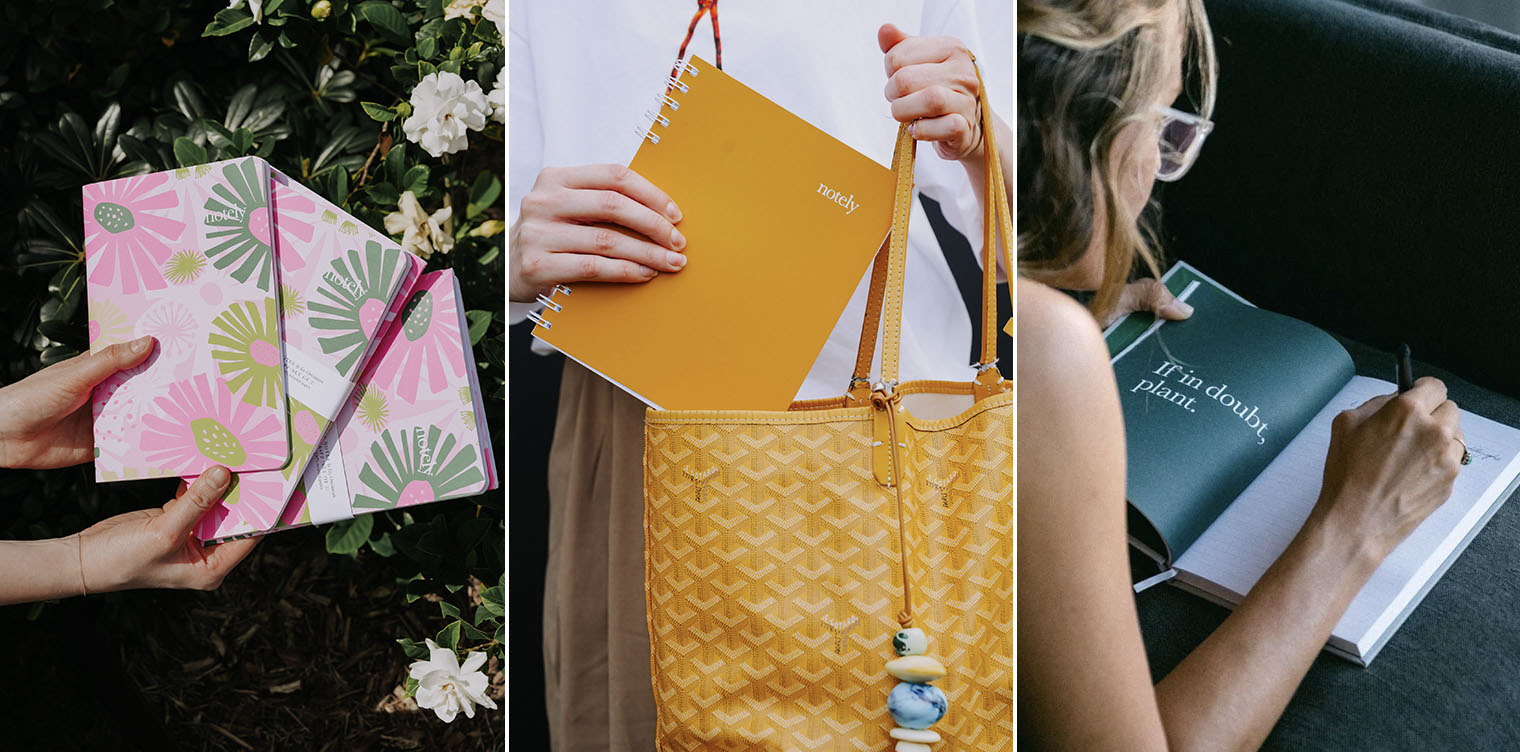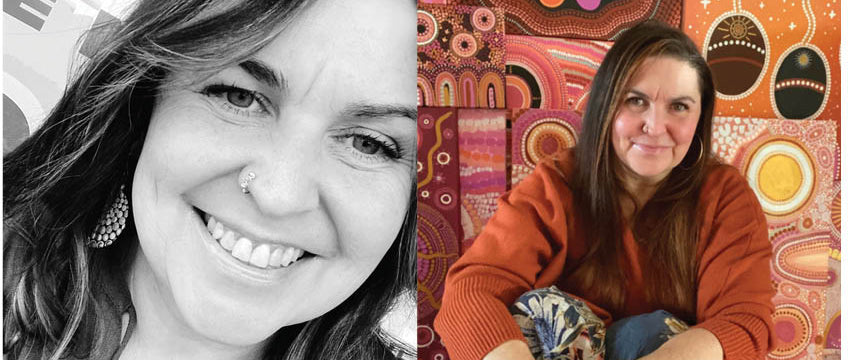If you’ve tried time and again to make writing in your journal or notebook a part of your daily routine, but have only ever been able to keep it up for a couple of days or weeks before falling off the wagon, or you’ve been journaling sporadically but never managed to make it a daily habit – this one’s for you!
First off, you should know that you’re most certainly not alone. Turns out we all struggle when it comes to forming good habits. Just ask anyone who’s ever tried to stick to a regular exercise routine, a healthy eating program, a productivity plan, or… well… for that matter, daily journaling.
Right about now you might be thinking, ‘Hold on a minute, not all habits are hard to form. I mean, it’s not easy to get into the habit of eating junk food, biting your nails, procrastinating, or spending too much time gaming or streaming.’ And you’d be right.
So, why are good habits so hard to form and bad ones so easy?
Well, according to psychiatry Professor Thomas Rutledge, our affinity towards bad habits is not due to laziness, lack of self-discipline, or a failure to understand that they are not good for us in the long term.
Bad habits are easily formed because they deliver instantaneous gratification, and we are biologically hardwired to repeat behaviours that provide immediate physical, social, and emotional satisfaction.
So, bad habits win out because they give us that immediate hit of happiness. Unfortunately, our bad habits, though temporarily satisfying, ultimately put us on the road to mental illness, addiction, and metabolic diseases.
Good habits on the other hand do not usually deliver much in the way of immediate rewards. It takes many weeks or months before you see progress. And this lack of instantaneous results makes it hard to stick to good habits. That said, if we put the work in and stay consistent in our good habits, we’ll reap long-term benefits in terms of health, happiness, and fulfillment.
It’s not always easy, but there are strategies you can use to power through the tough times and conquer the challenges that hamper habit formation. First, let’s take a look at some of the common challenges people face when trying to form a regular journaling habit.
Do these journaling roadblocks sound familiar?
In their book, Effortless Journaling: How to Start a Journal, Make It a Habit, and Find Endless Writing Topics, authors Barrie Davenport and SJ Scott share the eight common roadblocks to regular journaling. Perhaps you’ve experienced some of these in your own journey?
- I need concrete strategies and a step-by-step process for turning journaling into a consistent habit.
- Journaling feels overwhelming. I don't know what to do or how to do it.
- I've tried so many times before, and I just can't stick with it.
- My life is so busy that I can't find the time to journal.
- Myjournal is never around when I need it, so I forget to write.
- I have no idea what to write about. Staring at a blank page is intimidating.
- I'm afraid someone will read my journal.
- I don't know what kind ofjournal I need—there are so many types out there.
If you’ve come up against any (or all) of these, take heart! We’re going to share some strategies to help you overcome these roadblocks. So you can enjoy the incredible benefits of putting pen to paper daily.

How to overcome roadblocks and journal like a wild thing
1. Lack of concrete strategies
If you’re keen to experience the benefits of journaling in your life, but you’re at a loss regarding how to do it and what to write about, try different approaches to journaling until you find your niche(s).
Here are a few quick strategies to try:
- Stuck for words? Bullet journaling is a great way to develop journaling habit without having to write for hours. Simply, grab your bullet journal and make lists and short notes on anything from daily to-dos through to thoughts and feelings. Plus you can express your creative side by embellishing your entries with drawings, stickers, and decorative items.
- Stuck for ideas? Try prompt journaling. Journal prompts will help to guide your thoughts and often suggest ideas and reflections you may never have thought of on your own. Our 20 Journaling Promptsarticleis a great place to start with this type of journaling. Also, check out the fantastic selection of journaling prompts on a variety of topics available from Ambitiously Alexa.
- Stuck for a topic? Try gratitude journaling. It helps to create a positive mindset and you can start small. Your initial entries might be as simple as listing three things you’re grateful for each day.
Goal-based journaling is another great place to start your journaling practice. Use your journal or notebook to set goals, write your affirmations, track your progress, share your challenges, record the strategies you used to overcome them and describe how good it feels to achieve success.
- Need an audience? Sometimes it helps to write your journal in the form of a diary or letter. Imagine you’re sharing your thoughts with a very close and totally non-judgy friend who loves you dearly. You can even begin each with 'Dear Diary' if it helps – yes, even if you’re a middle-aged person. It’s not strictly reserved for use by teenage girls.
- Need some freedom? If you prefer to have an open structure to your entries, and you would like to keep a record of your thoughts and feelings, life experiences, and milestones, stream-of-consciousness journaling is for you. Just grab your notebook or journal, set yourself a goal (for example to fill three full scap pages), and go for it! Write down anything and everything that comes to mind with no censoring. This is a great way to clear your head at the beginning or end of each day.
- Prefer to draw: There are no hard and fast rules that say journaling must be done in words. If you’re of a more artistic bent, you can use sketches, paints, crayons, pastels, you name it to fill your art journal with images of the things you love. Try nature journaling for a winning combination of self-care and the outdoors.
2. Feeling overwhelmed
If you’ve tried to create a journaling habit only to feel overwhelmed by it all with no idea where to start, we’ve got you covered! Head over to our post Five Ways to Start Journaling where you’ll find a few really easy approaches to journaling that will help you get started.
You can also try some of the strategies shared in point 1 (Concrete Strategies) above. Don’t be scared to try out loads of different types of journaling until you find the one(s) you enjoy most.
Oh, and don’t feel you have to do the same thing every day! It’s perfectly okay to mix and match different types of journaling. The most important thing to remember is journaling is a personal journey, and there's no one right way to do it – just do what you feel comfortable with on the day.
3. Struggling to stick with it
If you’ve been struggling to stick with your regular journaling practice, it’s worth looking back at the times you have managed to spend time with your journal. You’ll probably find that most of your entries occur when something big happens in your life – you fell in love, you got that promotion, you had a fight with your best friend. At these times, journaling delivers immediate release as you unload your intense emotions and jumbled thoughts onto the page.
It’s usually on days when nothing much happens that it’s hard to pick up your journal and write On days like these, journaling requires you to dig deeper into your psyche, rather than just skimming the surface. You’re called to explore previously untapped thoughts and feelings, and contemplate the world around you and your place in it. These things can be uncomfortable and because there is no promise of an immediate reward, the process seems arduous – so into the “too hard basket” it goes!
But, it’s usually this deep-diving work that yields incredible long-term results. The key that unlocks these benefits is persistence, or what best-selling author Greg Reid calls 'stickability'. Being able to show up every day, even if just for a few minutes, will make all the difference to your long-term success. So, when you’re struggling to get in front of the page, you’ll need to remind yourself that you’re playing the long game, fish your journal back out of that basket, and press on.
One way to encourage yourself to honour your practice is to get a lovely new book, such as our blossom journal or fern fancy notebooks, illustrated by local artists, to inspire you. Also, remember to make journaling fun. Yes, it has a serious side to it, but it’s okay to have some fun with it too.
Shake things up a bit every now and then to keep it fresh and interesting. Head outdoors and do some nature journaling, write a song or poem, draw something (even if it’s not very good), write about your fur baby’s antics, or your real baby’s achievements – do whatever you need to do to get that day’s entry done. Future you will love you for it!
4. Lack of time
Ask anyone how they’re doing these days and ten-to-one they will say, ‘Oh, I’m fine, just sooooo busy!’ With more things to do than hours in the day, it’s easy to sacrifice self care activities, such as journaling, taking walks, meditating or getting a good night’s sleep.
Paradoxically, it’s because we are so busy that we really need to prioritise self care if we want to prevent fatigue, ill health and burnout. Journaling plays an important part in maintaining a healthy mind and body. That’s why it’s so important to carve out time to spend with your notebook or journal every day.
The important thing is to start small and cultivate consistency gradually. This means, instead of trying to commit to an hour of journaling each day, try a quick five minute entry in your bullet journal, gratitude journal
or notebookor nature journal. Then build on that over time.
Here are a few ideas to help you integrate journaling into your daily routine. Try setting the alarm five minutes earlier, make a cuppa and write for five minutes while you sip. If you’re more of a night owl, hop into bed five minutes earlier, grab your journal and jot down your thoughts and ideas before you turn out the light. Having this dedicated time will help ensure journaling becomes a habit rather than a sporadic activity.
Habit guru and author of Atomic Habits, James Clear suggests “habit stacking” as a powerful strategy for introducing new habits into your daily life. It’s incredibly easy and surprisingly effective. All you have to do is tag your new habit onto an existing habit, for instance, do a few minutes of journaling after brushing your teeth in the morning or take out your journal on your lunch break and write for a few minutes after you’ve finished eating.
5. My journal is never around when I need it
Inspiration often strikes at the least convenient moments, like when you’re walking the dog, hanging the washing, out in the garden, or at the hairdresser – usually, whenever your journal is out of reach. And by the time you get home, you’ve forgotten the brilliant idea you came up with.
Fortunately, we’ve got a super-easy solution to this little problem – our journals and notebooks are available in a wide range of sizes, designed to fit easily into bags, satchels, handbags, and pockets. So you’ll always have a Notely journal or notebookat the ready. You’ll never miss out on another brainwave again with our adorable range of pocket-sized notebooks that you can take with you wherever you go.
6. Writer's block
Staring at a blank page can be intimidating. You want to write something, but what? You wait for ideas to come. Beg them to come. But, nothing happens. Before you know it, your journaling time is up, you have to get the kids to school, and all you’ve done is stare at that mesmerising sea of white.

There are a couple of ways to overcome writer’s block. One way is to use stream-of-consciousness or automatic writing. Start by writing something like, ‘I have writer’s block and I don’t know what to write today…’ Then just keep going, letting your pen move across the page without really thinking about what you’re writing. You might be surprised by what comes out.
Another strategy is to embrace the journaling prompts and structured journaling techniques we mentioned in point 1 (Concrete Strategies) above. Check out podcasts such as Laura Tremaine’s 10 Things to tell you. Every episode leaves you with a question that you can answer by writing in your journal. And, in Episode 151: 10 Questions for starting over, Laura shares 10 prompts that will help you to start anything over – including your journaling habit.
Some life-changing questions you could try to answer in your journal every day include:
- How will my life be different in a year from today?
- What am I grateful for today?
- What nice thing can I do for someone else today?
- What am I worried about?
- What can I do about the things that are bothering me?
- What am I going to do for fun today?
P.S. Don’t forget, you’re not bound to writing only. If the words just won’t come, try expressing yourself in other ways. Take a look at these fantastic ideas for filling up your empty notebooks and journals.
7. Fear of privacy invasion
The fear of someone reading your journal is a legitimate concern, particularly when you really open up and share intimate thoughts and feelings. And, it's important to feel safe and free to express yourself honestly.
Our journals and notebooks are designed to fit easily into your bag, satchel, or pocket, so you can keep your journal safe by keeping it on your person.
Of course, that’s not always possible, so it’s a good idea to find a safe place to store your journal or notebook away from prying eyes. If you can’t find a suitable hiding place, consider purchasing a simple lockbox to keep it in.
8. Choosing the Right Journal
It’s important to choose the right type of journal or notebook to suit your style of journaling. For example, a bullet journal, art journal, plant journal, lined journal/notebook, or pocket notebook.
It’s even more important to make sure that your journal or notebook is locally produced (to reduce the carbon footprint of manufacture and distribution) and made from sustainable materials.
Ready to ramp up your journaling habit?
There’s nothing like a fresh new journal or notebook to inspire and ignite your passion for putting pen (or pencil) to paper. Take a gander at our fabulous range of notebooks and journals, beautifully illustrated by local artists and manufactured right here in Australia.
When you choose a Notely, you’re free to journal to your heart’s content, while still being kind to the planet. All our products are made using post-consumer and commercial waste, including FSC-certified recycled paper and card stock made from discarded coffee cups.
Plus, you’ll be helping us to achieve our mission to replant 100,000 trees by 2025. For every order, we plant one native tree, and every three orders protect an extra 2m2 of our native rainforest.

![Spearmint A6 Pocket Notebooks [BULK 8 PACK] - Notely Lined](http://notely.com.au/cdn/shop/products/spearmint-a6-pocket-notebooks-bulk-8-pack-notely-399099_1600x.jpg?v=1699275130)









